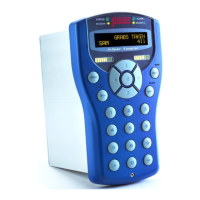9.6.1 ASCII
Only the characters 0-9 and A-F are transmitted as data. A ‘:’ is used to start the message, and
Carriage Return, Linefeed pair used to terminate it. A delay of 1 second may be tolerated between
characters. If the delay is greater than this, it is considered to be the end of the message. This usually
results in the message being discarded.
9.6.2 RTU
In RTU each 8 bit byte contains two 4bit hexadecimal characters, thus the data is packed more
densely than the ASCII protocol. The end of a message is taken as being a delay equal to 3.5 times the
time taken to send a character.
9.6.3 TCP
ModbusTCP data packets are similar to that of Modbus RTU, however the transmission of
packets is performed by the TCP/IP protocol. TCP/IP makes sure a packet is sent successfully and is not
corrupted over the network infrastructure, performing any retries automatically. ModbusTCP only must
confirm that queries and responses make sense and are valid. From the point of view of an engineer the
message is
9.7 Word Order
The Modbus was originally designed to support only 16bit integer numbers but over the years this has
been extended to support various other data types. As a result, various manufacturers use different word orders
for reading and writing data types that use 32bits and 64bits. As a result, we have allowed the ability to select the
ordering of these data types. If least significant word order is selected the first Modbus register (word) contains
bits 16-1 while the second contains bits 32-17. If most significant word order is selected the first Modbus register
contains bits 32-17 while the second contains bits 16-1. This ordering can be configured for register types float
and long.
9.8 Functions Supported
Not all the standard Modbus functions are required or supported in the slave mode. Only the following
functions are supported:
Not all the standard Modbus functions are supported in the master mode. Only the following functions are
supported:

